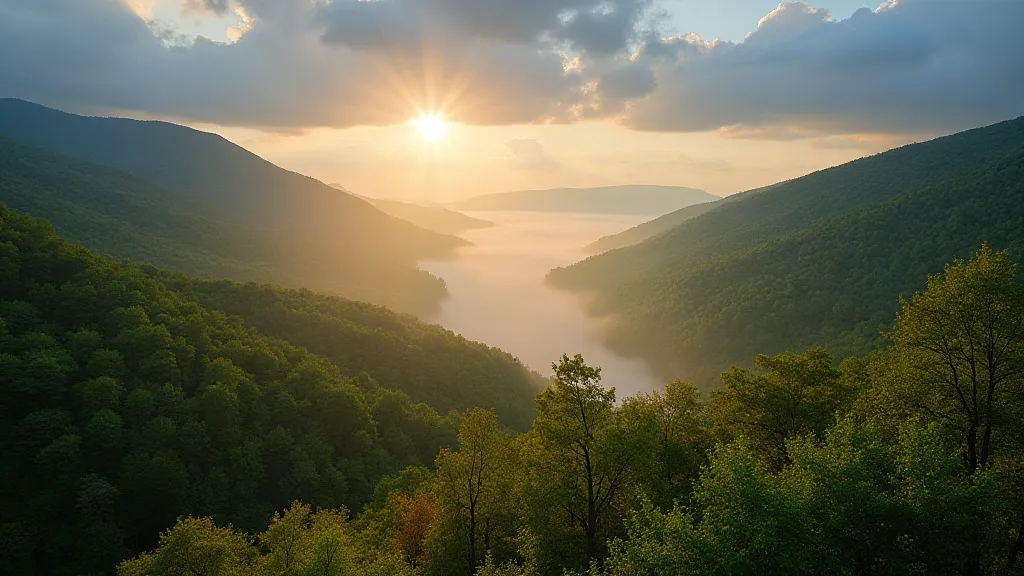The Weight of Words: Silence and the Nuances of Appalachian Communication
The Appalachian Mountains. A region etched into the American landscape, and equally etched into the hearts of those who call it home. We often think of the vibrant music, the intricate crafts, and the hearty cuisine – but a crucial element of Appalachian culture, often overlooked, is the profound weight of silence and the nuances of communication beyond mere words. It's a landscape where what *isn’t* said carries as much, if not more, significance than the spoken word.
Growing up in western North Carolina, I remember my grandfather, a taciturn man who rarely volunteered information. Conversations with him weren’t rapid-fire exchanges; they were deliberate, punctuated by long pauses, by the rustling of leaves, by the slow turning of a hand-carved pipe. At first, as a child, I interpreted this silence as standoffishness. I wanted him to *tell* me stories, to fill the space with sound. But as I grew older, I began to understand that his silence wasn't a lack of communication; it was a form of deep listening, of respect, and of a carefully considered response.
A History Rooted in Isolation
To understand the significance of Appalachian silence, we need to consider its historical context. For generations, Appalachian communities were largely isolated from the mainstream of American society. The rugged terrain, limited infrastructure, and a cultural emphasis on self-sufficiency led to a slower pace of life and a deep reliance on face-to-face interaction. This isolation fostered a culture where expressing vulnerability, sharing personal struggles, and even simply initiating conversation could be acts of trust, reserved for those deemed worthy of such intimacy. Boasting and excessive talkativeness were often viewed with suspicion, signaling a lack of humility or a desire to impress.
Early settlers brought with them a blend of Scots-Irish, English, and German linguistic traditions. The Scots-Irish, in particular, brought a strong sense of individualism and a tendency towards indirect communication – traits that would heavily shape Appalachian communication styles. Oral storytelling was paramount, passing down history, folklore, and practical knowledge across generations. But even in storytelling, silence played a vital role. Pauses allowed for dramatic effect, for reflection, and for the listener to fully absorb the narrative. These weren’t just tales; they were lessons, embedded with moral and practical wisdom.

The Language of Body and Gesture
Appalachian communication extends far beyond spoken words. Body language, facial expressions, and even the way one holds their hands convey a wealth of information. A raised eyebrow can express skepticism; a gentle nod can signal understanding; a slow blink can indicate weariness. These nonverbal cues are often more significant than the words themselves. My grandmother, who barely spoke above a whisper, could communicate entire emotions with a subtle shift in her eyes or a slight tremor in her hand. Learning to “read” these unspoken signals became essential for navigating social interactions.
Consider the tradition of quilting. Quilts weren’s merely functional coverings; they were visual narratives, intricately pieced together to tell stories, preserve memories, and celebrate family connections. The colors chosen, the patterns selected, even the small imperfections in the stitching spoke volumes about the quilter’s personality and intentions. This emphasis on visual communication echoes throughout Appalachian culture, reinforcing the idea that meaning can be conveyed through nonverbal expression.
The Accordion's Silent Language
My grandfather also played an antique accordion. Not for public performance, mind you, but in the quiet solitude of his workshop. The accordion itself, with its bellows and buttons, offers a poignant metaphor for Appalachian communication. The bellows—expanding and contracting—reflect the ebb and flow of conversation, the pauses and the expressions. Each button triggered a note, a small piece of a larger melody, but the true beauty lay in the spaces *between* those notes, the silence that allowed the music to breathe. The instrument itself required a delicate touch, a sensitivity to its mechanics, much like the skill needed to navigate the subtleties of Appalachian communication.
I remember watching him meticulously restore an old bellows. He's not a man prone to many words, but as he worked he would sometimes murmur about the intricacies of the instrument, about the materials used and how to best preserve its soul. Restoring an antique accordion isn’t just about replacing worn parts; it’s about understanding the craftsmanship, appreciating the history, and preserving the spirit of the instrument.

Preserving the Tradition
As Appalachian culture becomes increasingly integrated into the broader American landscape, it’s crucial to preserve these unique communication styles. The influence of technology and fast-paced modern life can erode the patience and attentiveness needed to truly listen and understand. Younger generations, particularly those who have left the mountains, may find the silence awkward or uncomfortable.
However, there’s a growing appreciation for the value of slowing down, of being present, and of truly connecting with others. The resurgence of interest in traditional crafts, folk music, and Appalachian storytelling is a testament to the enduring appeal of this rich cultural heritage. Recognizing and respecting the significance of silence and nonverbal communication is essential for maintaining the authenticity and integrity of Appalachian culture for generations to come.
My grandfather may not have spoken much, but his silence spoke volumes. It taught me the importance of listening, of observing, and of understanding that true communication transcends mere words. It's a legacy I carry with me, a silent echo of the mountains themselves.






